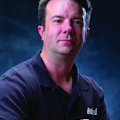All too often, I am confronted with the issue of whether a thermal imager is necessary. I have heard all kinds of reasons not to carry the thermal imager, including, "It's too heavy," "It will only slow me down," "I have too many other tools to carry" and "I don't really need a thermal imager." The truth of the matter usually lies in how you define need.
These same complaints were leveled against turnout gear and self-contained breathing apparatus (SCBA) when these items began to permeate the fire service and for the most part they were true then, as well. Our rubber coats and three-quarter boots were fairly light and afforded what was considered reasonable protection at the time; however, when more modern gear came on the market with thermal liners and moisture barriers, it was typically seen as heavy, cumbersome and unnecessary. It was said at the time that the new gear was nice to have, but nobody really "needed" the level of protection it afforded to get the job done. Fires were fought for many years without the benefit of turnout gear. They just weren't fought as well as they are with today's turnout gear.
Thermal imagers are in much the same camp. Do you need a thermal imager to fight fire? No. Do you need a thermal imager to fight fire better? Yes. There are simply too many benefits to be ignored.
• Firefighter safety — The first and primary benefit of the thermal imager is the improvement to firefighter safety. When visibility is restored, safety is increased dramatically. Orientation, both within a specific room as well as the structure in general, improves dramatically when the firefighter can see the furnishings and understand the layout. Accountability is improved when firefighters can see each other. Secondary means of egress are easily located from across the room. Issues of structural integrity such as sagging ceilings or missing floors are easily identified. Specific types of fire hazards such as compressed gas cylinders, flammable liquid containers and even large, angry dogs (if you have ever encountered one of these unexpectedly in a structure fire, you know what I am talking about) are readily recognized.
Rescuing other firefighters is also quicker and more efficient with a thermal imager. With heart attacks claiming so many firefighters, it is possible for a member of your crew to go down silently and the shrill noise of a personal alert safety system (PASS) alarm is often the first indicator received that something has gone wrong. A thermal imager would enable you to see this event in real time, saving precious seconds in detection and helping you to extricate the individual in the most expeditious way possible. In fact, the benefits to firefighter safety are so well known that the National Institute for Occupational Safety and Health (NIOSH) regularly includes the presence or absence of a thermal imager as well as its appropriate or inappropriate use as a documentable factor in a firefighter line-of-duty-death investigation.
• Search and rescue — There is simply no comparison between search times without a thermal imager and search times with a thermal imager. A time study conducted in 2001 revealed a staggering 75% decrease in search times when a thermal imager was used versus traditional crawl-and-grope, but this was not the only benefit realized. In the crawl-and-grope method, 30% of the victims were never located. When a thermal imager was used, the percentage of located victims climbed to 99%.
Even given the overwhelming statistical differences, there are still those who refuse to rely on the imager. While the reasons are many, the data is undeniable. The only people being harmed by refusal to use a thermal imager during primary search are the very people you are there to save. Trying harder or moving faster simply cannot make up for the efficiency deficit of not utilizing a thermal imager.
• Firefighting efficiency — It wasn't that long ago that whenever you wanted to drive to a destination you had never been to, you were forced to call for directions and write them down turn by turn. Computer software and the Internet changed this paradigm quickly; however, the most efficient way now is the magic box that sits on many dashboards or attaches to many windshields. You simply enter your destination and the all-too-familiar voice guides you turn by turn. There is no voice direction on your thermal imager, but it can serve as a sort of GPS to the seat of the fire. By monitoring directionality of convected air currents, the firefighter can follow them back to the source.
The thermal imager can aid in both the need for and the evaluation of the effectiveness of ventilation. When forcing internal doors or windows, manipulating tools, evaluating the effectiveness of the chosen fire stream pattern and location or breaching walls, the thermal imager can improve the efficiency and the overall safety of the operation.
BRAD HARVEY is the Thermal Imaging Product Manager at Bullard. He is a veteran of public safety as a firefighter, police officer and paramedic and is certified through the Law Enforcement Thermographers' Association (LETA) as a thermal imaging instructor. Harvey has worked as a high-angle rescue instructor and is a certified rescue technician and fire instructor. If you have questions about thermal imaging, you may e-mail him at [email protected].
About the Author
Brad Harvey
BRAD HARVEY is the Thermal Imaging Product Manager at Bullard. He is a veteran of public safety as a firefighter, police officer and paramedic and is certified through the Law Enforcement Thermographers’ Association (LETA) as a thermal imaging instructor. Harvey has worked as a high-angle rescue instructor and is a certified rescue technician and fire instructor. If you have questions about thermal imaging, you may e-mail him at [email protected].
